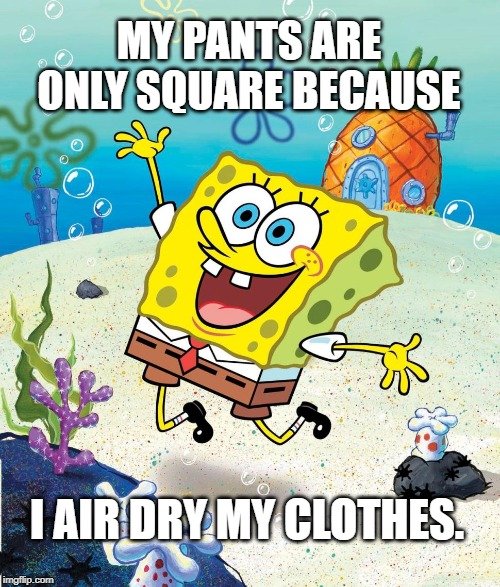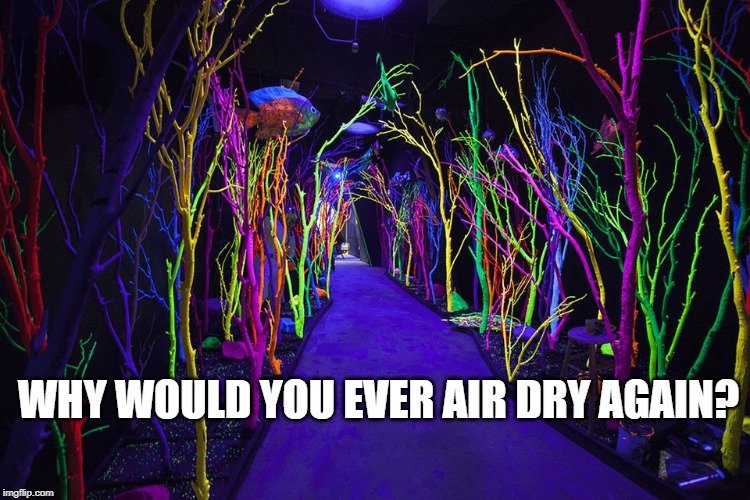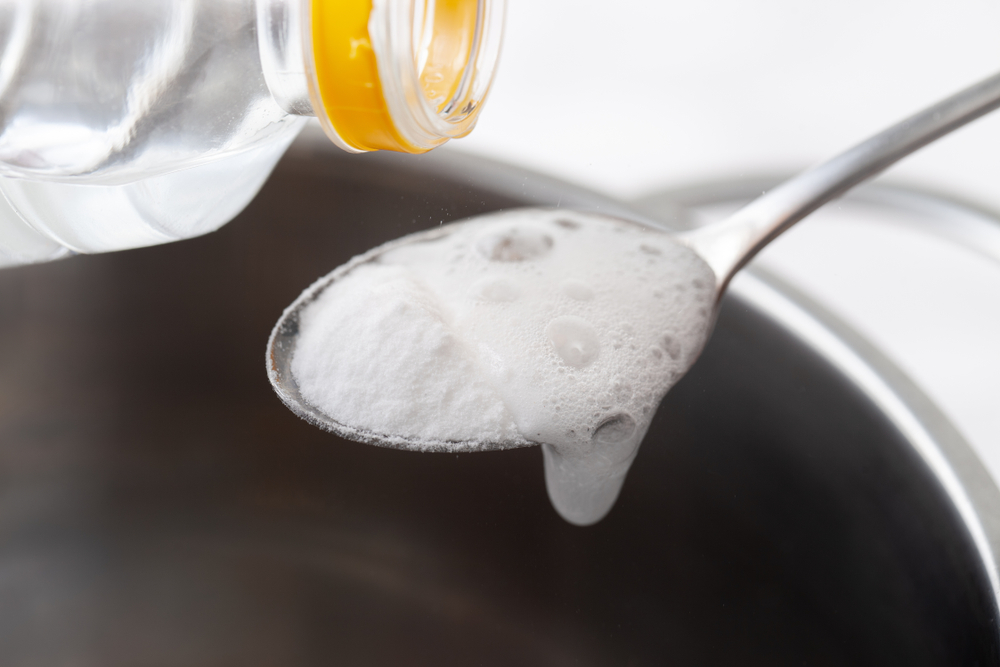Table of Contents (click to expand)
The difference between air-drying and tumble-drying is that air-drying keeps the cellulose fibers from reforming their hydrogen bonds more effectively, which makes the towel feeling a bit fluffy. Tumble drying, on the other hand, causes the cellulose fibers to re-bond more firmly, which makes the towel feel rougher.
There are few things as satisfying as putting on a pair of jeans that just came out of the dryer. However, there remains an age-old debate between air-drying and tumble-drying our clothes. Depending on how you were raised, how big your house is, or what country you live in, you may have very strong opinions about whether to hang your clothes on a line or simply toss them in a dryer.

While both options leave you with dry clothes, there are a few stark differences between the two results, namely that air-dried clothes and towels often feel scratchy or rough after drying, whereas tumble-dried fabrics are soft and smooth. If the concept of drying consists of eliminating the water from a material, why are the two end results so different?
Air Dry Vs. Tumble Dry
When you do a load of laundry, you are drenching all of those fabrics, many of which are cotton or other organic polymers, in water. Now, most clothing fiber is made of plant material, namely cellulose, which is very strong, durable and easy to work with. The other things about cellulose is that it loves water, and will absorb as much as possible, until it is saturated.
All the fibers in your clothes become saturated with water in the washing machine. Some of the hydrogen bonds that keep the cellulose together are disrupted by the swollen, saturated cellulose. Essentially, the cellulose is less well-connected as the polymer chains are more able to slip and slide past one another. When the water begins to evaporate, the hydrogen bonds between the cellulose chains reform, returning them to a strong, sturdy state. However, the manner in which the evaporation takes place is important for the final texture.
 In a dryer, the clothing is constantly moving, which makes it more difficult for the cellulose fibers to re-bond as firmly or comprehensively. Essentially, this keeps the towel feeling a bit fluffy, since the cotton fibers aren’t as firmly bound to one another. If you hang your wet clothes out on a line in the sunshine, the only movement of the fabrics may come from a bit of wind. This static placement allows the cellulose fibers to reform their hydrogen bonds more effectively. More bonds between the fibers means more strength or sturdiness, and in terms of texture, that means a rougher feel. This is further exacerbated by using an excess of laundry detergent, as any residual detergent will make this effect even more noticeable.
In a dryer, the clothing is constantly moving, which makes it more difficult for the cellulose fibers to re-bond as firmly or comprehensively. Essentially, this keeps the towel feeling a bit fluffy, since the cotton fibers aren’t as firmly bound to one another. If you hang your wet clothes out on a line in the sunshine, the only movement of the fabrics may come from a bit of wind. This static placement allows the cellulose fibers to reform their hydrogen bonds more effectively. More bonds between the fibers means more strength or sturdiness, and in terms of texture, that means a rougher feel. This is further exacerbated by using an excess of laundry detergent, as any residual detergent will make this effect even more noticeable.
Also Read: Are Machine-Dried Towels Less Absorbent Than Air-Dried Towels?
Pros And Cons
Now that you understand the different textures that the two drying techniques cause, it’s important to consider some of the other pros and cons of air-drying vs tumble drying.
Air Drying
If you don’t mind being patient, air drying is a much more environmentally-friendly way to dry your clothes, as it will reduce your carbon footprint and electricity usage. This is a good way to save money, not to mention saving the cost of buying a dryer, and inevitably needing to replace it every decade. Additionally, air drying will keep your clothes in better condition for longer, as tumble drying can increase the friction, wear and tear on the fabric, and may even fade the colors, whereas air drying does not.
Tumble Drying
For those who prefer speed and convenience, tumble drying is a fast and reliable way of drying your clothes, and ensuring that they don’t come out feeling scratchy. That being said, the “rough” feeling often disappears after wearing an article of clothing for a few minutes. Unfortunately, air drying also has a tendency to leave wrinkles and seams in clothes that aren’t all that desirable, which means ironing may have to be a part of your life. Tumble drying—due to the constant movement—is less likely to have this effect, so if you hate ironing, a tumble dryer might be your best choice!

Also Read: Why Do Clothes Shrink When You Wash Them?
Ways To Avoid Crunchy Clothes
For those who want to consider the environment in their decisions, but also have clothes that are comfortable and look good, there are some clever tricks for reducing the “crunchy” feel of air-dried fabrics.
Less Detergent – As mentioned earlier, having too much detergent in your load can make the problem of scratchy fibers even worse. Cut down the amount of detergent you usually use by 20% and see if you notice a difference in the fluffiness of your towels!
Vinegar – If your clothes are quite soiled, you may not want to reduce the amount of detergent you use, but you can use vinegar instead! Vinegar cuts through detergent, so if you add a bit of vinegar at the final spin cycle, less of the detergent will remain in your clothes to stiffen up.

Wind and Hand Tumbling – As was explained earlier, the constant tumbling motion of a dryer is what keeps the fibers from forming such a solid mat. Therefore, if you can shake out your wet clothes before hanging them up, or not do laundry until you have a good breezy day, you can avoid that scratchy end product. A bit of movement goes a long way!

Short-Term Drying – Running your dryer for a full cycle represents a notable increase in energy expenditure, but if you want to reduce your carbon footprint, try putting your clothes in the dryer for 5-10 minutes either before you hang them on the line or after they have dried to mild dampness on the line. A brief stint in a tumbling dryer will give it some fluff, without churning out power and heat for an hour straight!
How much do you know about drying clothes?

